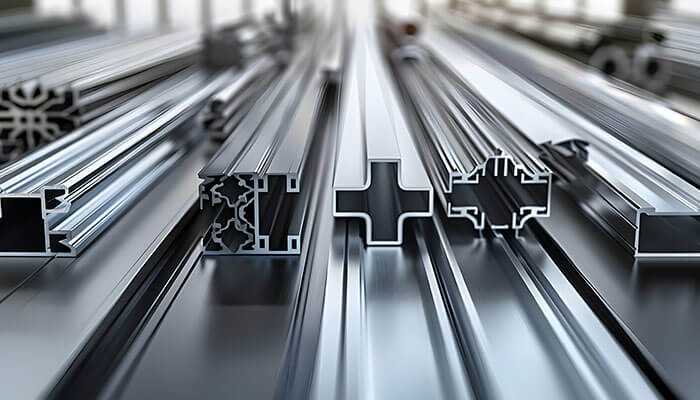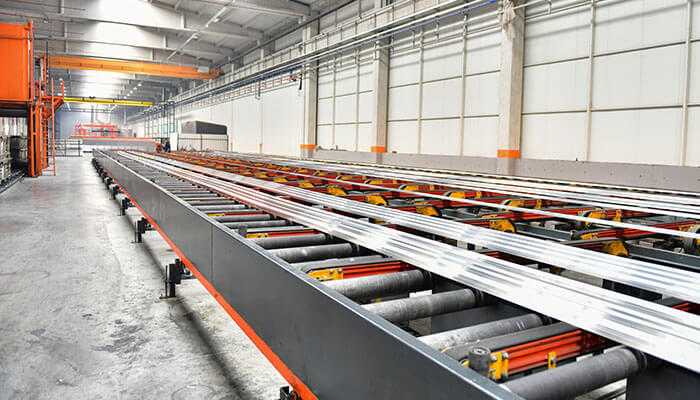What if you could transform raw materials into precise, customized shapes with unmatched efficiency? Profile extrusion offers the solution. This innovative process has revolutionized manufacturing, empowering businesses to create diverse products, from sleek automotive components to robust construction materials.
However, to fully harness profile extrusion’s potential, manufacturers must understand its intricacies and applications. This article will explore how profile extrusion drives modern manufacturing, highlighting its key benefits and the industries it impacts.
1. Material Versatility in Profile Extrusion
Profile extrusion accommodates an extensive range of materials, from thermoplastics and metals to composites and rubber. This adaptability allows manufacturers, especially those offering plastic manufacturing services, to precisely select materials based on performance requirements, cost-effectiveness, and sustainability goals. For instance, lightweight thermoplastics are often chosen for industries like consumer electronics and automotive, where reducing weight can improve fuel efficiency or ease of handling.
Meanwhile, aluminum and steel are ideal for structural strength and durability construction applications. The wide array of extrusion materials supports customization, helping industries meet stringent application-specific needs without compromising functionality or cost. This versatility in material selection is a critical factor that makes profile extrusion valuable in modern, multifaceted manufacturing environments.
2. Cost-Effective Mass Production with Profile Extrusion
One of profile extrusion’s greatest strengths is its capacity for high-volume production at relatively low costs. Once the initial mold or die is created, extrusion can run continuously, generating consistent and identical profiles without needing extensive retooling. This setup is particularly advantageous for industries where large quantities of uniform components are required, such as construction, automotive, and packaging.
The cost per unit significantly decreases as production scales up, making extrusion an economical choice compared to other manufacturing methods that may require costly adjustments or manual intervention. Additionally, the automated nature of extrusion reduces labor costs and enhances production speed, delivering a combination of cost savings and efficiency that directly benefits manufacturers operating in high-demand markets.
3. Design Flexibility in Profile Extrusion
Profile extrusion offers unparalleled design flexibility, making it possible to produce intricate shapes and custom profiles tailored to specific functions. Manufacturers can design unique profiles with precise dimensions, complex geometries, and detailed cross-sections, particularly beneficial in specialized industries like aerospace, automotive, and medical devices. The profile extrusion process can accommodate profiles with hollow sections, multiple layers, and specialized reinforcements, allowing for products that meet stringent performance or aesthetic criteria.
For example, extruded profiles may include channels or grooves for wiring, seals, or other essential components in the automotive sector. This ability to customize shapes and features through extrusion helps companies create innovative products, minimize assembly complexity, and improve the overall functionality of their components.
4. Efficient Material Utilization in Profile Extrusion
Extrusion is inherently efficient in using materials, as it typically generates minimal waste. Unlike other manufacturing methods that may involve cutting away or machining excess material, extrusion produces components with precise measurements that align with the final desired shape. This efficiency is vital in sectors where material costs are high or resource conservation is a priority.
Additionally, co-extrusion processes enable manufacturers to combine multiple materials in a single profile, adding layers or functionalities without additional production stages. This maximizes material use and enhances product versatility, allowing, for instance, a single profile to have both a rigid and flexible section. Efficient material utilization drives costs and aligns with sustainability goals, reducing waste and environmental impact.
5. Energy Efficiency and Automation in Profile Extrusion
Profile extrusion is an energy-efficient process, particularly with the advancements in modern extrusion machinery. Today’s extruders are optimized to minimize energy consumption, operational costs, and carbon footprint. Furthermore, many extrusion systems can be fully automated, which minimizes the need for manual supervision and increases production speed.
Automated extrusion lines can run continuously, producing uniform products with consistent quality, which is crucial for industries that rely on large-scale production. By reducing the reliance on manual labor and improving output through automation, extrusion allows manufacturers to maintain competitive pricing and operational efficiency while adhering to energy-saving practices that benefit both the environment and the bottom line.
6. Enhanced Product Durability
Profile extrusion is instrumental in creating durable components capable of withstanding demanding environments. The process allows for precision in forming profiles with robust structural integrity, making them highly resistant to environmental stressors such as heat, moisture, and chemical exposure. For instance, extruded aluminum profiles are commonly used in construction and infrastructure, where they face rigorous conditions but need to maintain performance over time.
Additionally, high-performance polymers in extrusion produce products that can endure extreme temperatures or repeated impact, which is beneficial for applications in the automotive and aerospace industries. The durability offered by extruded profiles ensures a longer product lifespan, reducing replacement needs and maintenance costs and ultimately improving reliability for end users.
Conclusion
In an era of rapid technological advancement, manufacturers are constantly seeking innovative ways to optimize their production processes. Profile extrusion offers a compelling solution, combining precision engineering with high-volume production. By understanding the intricacies of this process, businesses can unlock their full potential and gain a competitive edge.



